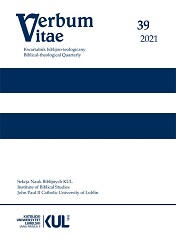Homoseksualizm w starożytnym Egipcie
Homosexuality in Ancient Egypt
Author(s): Andrzej ĆwiekSubject(s): Social history, Gender history, Ancient World, Hermeneutics
Published by: Katolicki Uniwersytet Lubelski Jana Pawła II - Wydział Teologii
Keywords: ancient Egypt; homosexualism; texts; iconography; Horus; Seth;
Summary/Abstract: The issue of homosexuality in ancient Egypt has been studied for less than a century. Both the attitude towards, and the methodology regarding, this issue changed constantly over time. The author presents a critical review of the literature, together with some original interpretations. The most important sources, which are relatively not numerous and often ambiguous, are described. The written sources include religious and literary texts e.g. the tale Horus and Seth, the story of King Nefer-ka-Ra and “General” Sa-senet, mentions in the instructions of Peteh-hetep, the Book of the Dead (the “negative confession” in the Chapter 125), the Coffin Texts and dream-books. Analysis of the texts reveals many controversial questions concerning the context of the message, as well as the phraseology and proper meaning of the terms related to the issue of sexuality. Two categories clearly appear: homosexual rape, with the intention to dominate and humiliate an enemy, and a emotional relationship leading to sexual acts. The iconographic sources are less numerous, and their interpretations much disputable. They include the images of Ni-ankh-Khenemu and Khenemu-hetep in their shared tomb at Saqqara, the depictions of same-sex couples, graffiti, and drawings on ostraca depicting (homosexual?) couples having sex. A large part of the sources in unequivocal, and in the case of lesbian love simply vague. Data on the attitude of the ancient Egyptians towards homosexual relations are ambivalent at best. They were considered socially incorrect but not penalized.
Journal: Verbum Vitae
- Issue Year: 39/2021
- Issue No: 1
- Page Range: 49-74
- Page Count: 26
- Language: Polish

